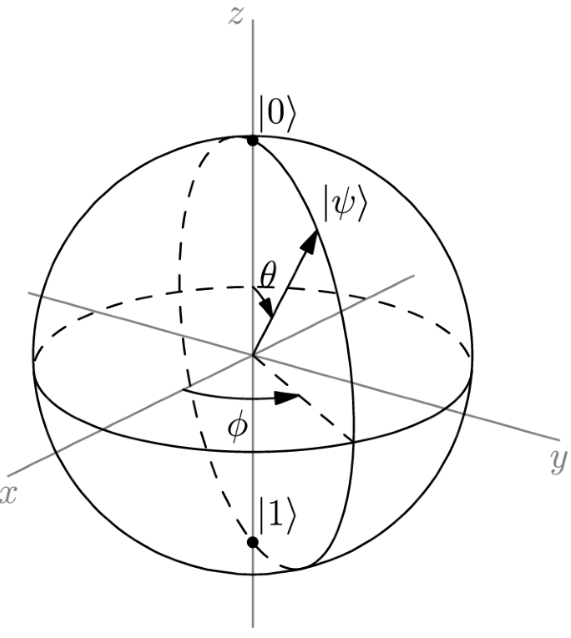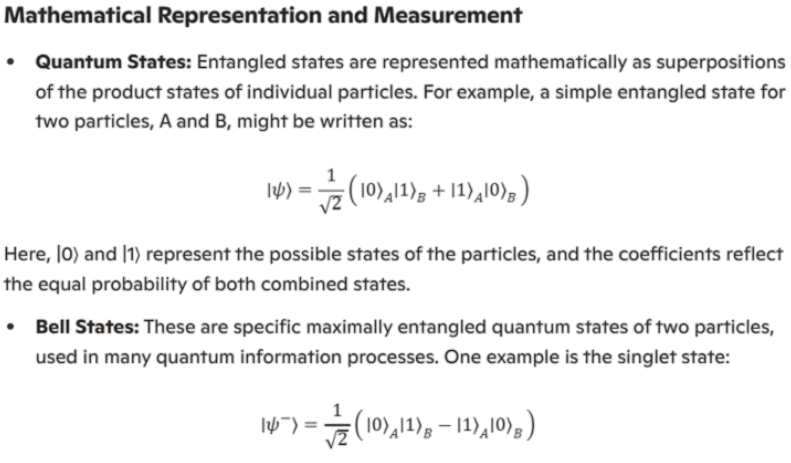Quantum Entanglement
Quantum entanglement is a mind-boggling phenomenon in quantum mechanics where two or more particles become linked together in a special way, regardless of the distance separating them. This connection is such that the quantum state of each particle cannot be described independently of the others.
Entangled States
When particles are entangled, their properties, such as spin, polarization, or position, are connected.

Imagine two entangled particles, like a pair of magical dice. In classical physics, each die has its own independent roll, resulting in a random outcome. However, with entangled dice, the outcome of one die instantly determines the outcome of the other, no matter how far apart they are. If you roll one die and get a six, the other die instantly shows the opposite number, even if it's light-years away.
This instantaneous connection between entangled particles has led to much debate and speculation. Albert Einstein famously referred to entanglement as "spooky action at a distance." However, numerous experiments have confirmed the reality of entanglement, showcasing its profound implications for our understanding of the universe.
Historical Context and Key Experiments
Einstein-Podolsky-Rosen (EPR) Paradox
In 1935, Albert Einstein, Boris Podolsky, and Nathan Rosen published a paper arguing that quantum mechanics was incomplete because it allowed for "spooky action at a distance." They proposed a thought experiment now known as the EPR paradox to illustrate their point.
Bell's Theorem
In 1964, physicist John Bell formulated Bell's theorem, which provided a way to test the predictions of quantum mechanics against those of local realism (the idea that objects are only influenced by their immediate surroundings). Bell's inequalities, derived from this theorem, showed that if quantum mechanics were correct, certain correlations between entangled particles would violate the inequalities.
Experimental Verification
Over the decades, numerous experiments have confirmed the predictions of quantum mechanics and the existence of entanglement, notably the experiments conducted by Alain Aspect in the 1980s. These experiments demonstrated that entangled particles exhibit correlations that cannot be explained by classical physics.

Paradoxes and Philosophical Implications
Quantum entanglement has led to intense debate and philosophical discussions about the nature of reality, locality, and causality:
- Non-Locality: Entanglement implies that the particles' correlations occur instantaneously, regardless of distance. This challenges the classical concept of locality, which states that objects are only directly influenced by their immediate surroundings.
- Realism: The phenomenon suggests that particles do not possess definite properties until measured, challenging the classical notion of an objective reality that exists independently of observation.
- Causal Relationships: Entanglement raises questions about the nature of causality and the limits of classical logic in describing the quantum world.
Conclusion
Quantum entanglement is a cornerstone of quantum mechanics, providing deep insights into the interconnected nature of the quantum world. Its implications are vast, influencing the fundamentals of physics and enabling cutting-edge technologies like quantum computing and communication. Understanding entanglement is crucial for exploring the profound mysteries of the quantum realm and harnessing its potential for future technological advancements.